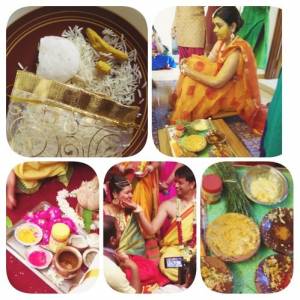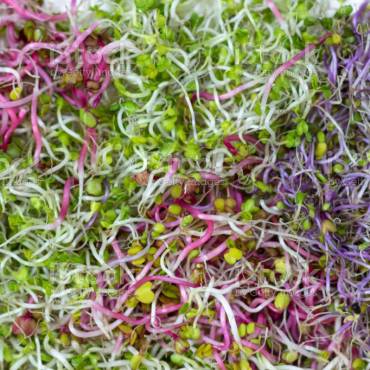 I have recently returned from a family wedding, popularly referred to as the #twostatewedding, where my baby sister, a North Indian, tied the knot with her charming South Indian groom. I today can say with pride that my family is a true example of cultural integration with grooms from North, East and now Southern parts of India and this brings with it the abundance of rich culinary traditions and subtle cultural nuances.
I have recently returned from a family wedding, popularly referred to as the #twostatewedding, where my baby sister, a North Indian, tied the knot with her charming South Indian groom. I today can say with pride that my family is a true example of cultural integration with grooms from North, East and now Southern parts of India and this brings with it the abundance of rich culinary traditions and subtle cultural nuances.
Amidst all the fun, food and festivities, what enthralled me most were the rituals and the use of ingredients on different occasions in both the cultures and their significance. Haldi ( turmeric) was one such ingredient used that permeated every ceremony, be it before , during or after the wedding.
Turmeric , popularly referred to as the ‘asian yellow dye’ by the global chefs on the food channels today is not a mere dye or else it wouldn’t have found mention in ancient Indian scriptures like Garuda Purana, Devi Baghwatam, Vishnu Sutra, Charak Samhita , Tantrik texts to name a few.
This humble rhizome not only has the power to prevent but also treat a variety of diseases like Rheumatoid Arthirits, Ulcerative Colitis, Alziemer’s Disease, Childhood Leukaemia, but the recent research also shows that the turmeric can augment the effects of chemotherapy in cancer patients.
In Indian culture, turmeric is the symbol of purity, fertility and prosperity.
It’s paste on the skin renders the golden glow and radiance and purifies the to- be bride and groom. Hence the ‘haldi ceremony’ a day before the wedding day , was invented. While the elders blessed the bride to be with application of haldi, oil, curd, mustard seeds, the friends teased and sang songs including the most obvious jingle of Vicco Turmeric 😉 The modern day parlours can neither give competition to this ritual nor to the fun and cheap thrills that came with it ;).
The haldi- kumkum ceremony was performed during the wedding. This is popular in South India where the groom lovingly puts haldi on his bride’s cheeks, as haldi symbolises fertility. Even the taali (the wedding pendant, symbol of marriage) was strung on a thread dipped in turmeric.
As the guests began to leave after the espousal, the bride’s mother packed a small potli along with sweets. On reaching home, when I opened this little potli it had rice, batasha ( sugar drop) and yes, Haldi!! Haldi is said to symbolize the hostess’s parting wishes to good fortune and prosperity for her visitors!
I had researched and read all this as part of my professional interest in Indian food wisdom many years ago but as they say, seeing is believing and for me it manifests itself as having immense faith and belief in my irrefutable cultural wisdom and greater pride to being an Indian. It further motivates me to continue my journey on the motto by Steve Jobbs, ‘Stay Hungry, Stay foolish’ to nurture my unconventionalism and take the road less travelled






